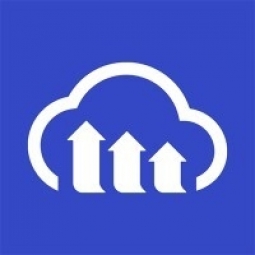公司规模
SME
地区
- Europe
国家
- Germany
产品
- Cloudinary
技术栈
- Cloudinary’s unique URL-based solution
- Cloudinary’s multi-CDN capabilities
- Lazy loading JavaScript plug-in
实施规模
- Enterprise-wide Deployment
影响指标
- Revenue Growth
- Customer Satisfaction
技术
- 平台即服务 (PaaS) - 连接平台
适用行业
- 零售
适用功能
- 销售与市场营销
- 商业运营
用例
- 供应链可见性(SCV)
- 零售店自动化
服务
- 云规划/设计/实施服务
关于客户
Stylight 是全球领先的时尚和生活方式行业聚合平台,为用户和消费者提供信息。它帮助在线购物者搜索 1,000 多家拥有最佳品牌和零售商的在线商店,比较 3,000 多万种产品的价格,并找到所有最优惠的价格。一旦用户找到他们想要的产品,Stylight 就会将他们重定向到零售商的网站以完成购买。该公司总部位于德国巴伐利亚州慕尼黑,团队规模为 51-200 名员工。
挑战
Stylight 是一家时尚和设计零售搜索引擎,它面临着管理和处理每周添加到其网站的数千张新图片的挑战。由于开发团队规模较小,该公司需要一种高效的方式来确保这些图片可以在 16 个国家/地区的消费者使用的任何设备上快速、最佳地查看。该团队考虑了本地选项,这将要求公司托管和存储自己的图片,但最终决定寻找云解决方案。
解决方案
Stylight 决定使用 Cloudinary,这是一种基于云的图像管理解决方案。通过标记产品以使其出现在适当的类别中来丰富产品的团队还负责将图像上传到 Cloudinary。负责 Stylight 面向客户部分的产品团队使用包含 Cloudinary 图像 ID 的 REST API,并通过 Cloudinary 独特的基于 URL 的解决方案应用某些转换,以确保这些图像在网站上按预期显示。Cloudinary for Stylight 最重要的功能之一与自动化有关。使用自动格式选择和自动质量压缩,Stylight 团队能够轻松提供最佳图像格式(例如适用于 Chrome 浏览器的 WebP)以及基于视口、带宽和其他独特因素的最佳图像质量。最近,Stylight 开始利用 Cloudinary 的多 CDN 功能,该功能可在多个内容交付网络(Akamai、Fastly 和 Amazon CloudFront)之间动态切换。
运营影响
数量效益

Case Study missing?
Start adding your own!
Register with your work email and create a new case study profile for your business.
相关案例.

Case Study
Improving Production Line Efficiency with Ethernet Micro RTU Controller
Moxa was asked to provide a connectivity solution for one of the world's leading cosmetics companies. This multinational corporation, with retail presence in 130 countries, 23 global braches, and over 66,000 employees, sought to improve the efficiency of their production process by migrating from manual monitoring to an automatic productivity monitoring system. The production line was being monitored by ABB Real-TPI, a factory information system that offers data collection and analysis to improve plant efficiency. Due to software limitations, the customer needed an OPC server and a corresponding I/O solution to collect data from additional sensor devices for the Real-TPI system. The goal is to enable the factory information system to more thoroughly collect data from every corner of the production line. This will improve its ability to measure Overall Equipment Effectiveness (OEE) and translate into increased production efficiencies. System Requirements • Instant status updates while still consuming minimal bandwidth to relieve strain on limited factory networks • Interoperable with ABB Real-TPI • Small form factor appropriate for deployment where space is scarce • Remote software management and configuration to simplify operations

Case Study
Digital Retail Security Solutions
Sennco wanted to help its retail customers increase sales and profits by developing an innovative alarm system as opposed to conventional connected alarms that are permanently tethered to display products. These traditional security systems were cumbersome and intrusive to the customer shopping experience. Additionally, they provided no useful data or analytics.

Case Study
How Sirqul’s IoT Platform is Crafting Carrefour’s New In-Store Experiences
Carrefour Taiwan’s goal is to be completely digital by end of 2018. Out-dated manual methods for analysis and assumptions limited Carrefour’s ability to change the customer experience and were void of real-time decision-making capabilities. Rather than relying solely on sales data, assumptions, and disparate systems, Carrefour Taiwan’s CEO led an initiative to find a connected IoT solution that could give the team the ability to make real-time changes and more informed decisions. Prior to implementing, Carrefour struggled to address their conversion rates and did not have the proper insights into the customer decision-making process nor how to make an immediate impact without losing customer confidence.

Case Study
Ensures Cold Milk in Your Supermarket
As of 2014, AK-Centralen has over 1,500 Danish supermarkets equipped, and utilizes 16 operators, and is open 24 hours a day, 365 days a year. AK-Centralen needed the ability to monitor the cooling alarms from around the country, 24 hours a day, 365 days a year. Each and every time the door to a milk cooler or a freezer does not close properly, an alarm goes off on a computer screen in a control building in southwestern Odense. This type of alarm will go off approximately 140,000 times per year, equating to roughly 400 alarms in a 24-hour period. Should an alarm go off, then there is only a limited amount of time to act before dairy products or frozen pizza must be disposed of, and this type of waste can quickly start to cost a supermarket a great deal of money.

Case Study
Supermarket Energy Savings
The client had previously deployed a one-meter-per-store monitoring program. Given the manner in which energy consumption changes with external temperature, hour of the day, day of week and month of year, a single meter solution lacked the ability to detect the difference between a true problem and a changing store environment. Most importantly, a single meter solution could never identify root cause of energy consumption changes. This approach never reduced the number of truck-rolls or man-hours required to find and resolve issues.








